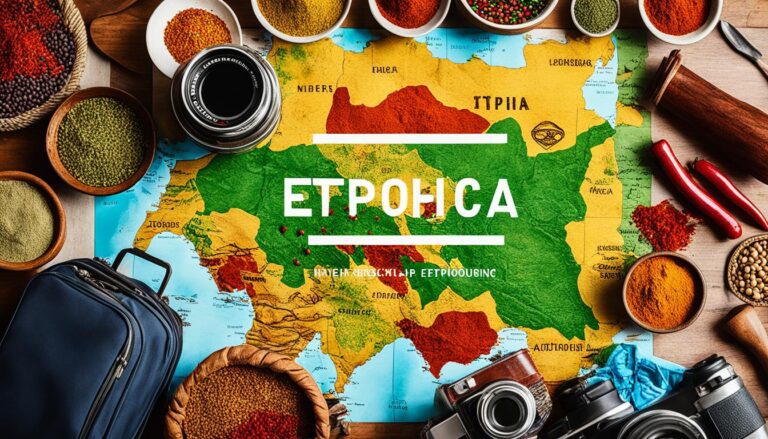What Is Ingera?
Exploring the Fascinating World of Injera
Injera is a traditional Ethiopian flatbread that has earned worldwide acclaim for its unique texture, flavor, and cultural significance. This spongy, sourdough-like bread is a staple in Ethiopian cuisine and plays a central role in the dining experience of the country. Injera is not just a type of bread; it is a symbol of togetherness, community, and shared meals in Ethiopian culture.
What sets injera apart from other types of bread is its distinct preparation method and the key ingredient used in its making, teff flour. Teff, a vital grain native to Ethiopia, is incredibly nutritious and gluten-free, making injera not only delicious but also suitable for individuals with gluten sensitivities. The fermentation process involved in making injera gives it a slightly tangy taste, adding depth to its flavor profile.
One of the most unique aspects of injera is its serving style. Typically, injera is used both as a plate and an eating utensil. Various flavorful stews, vegetables, and meats are placed on top of a large piece of Injera, which is then torn into smaller portions for diners to scoop up the accompanying dishes. This communal way of eating highlights the importance of sharing and communal dining in Ethiopian culture.
Furthermore, the act of breaking bread, or in this case injera, symbolizes unity, friendship, and hospitality among those sharing the meal. The process of making injera is considered an art form in Ethiopia, often passed down through generations, reinforcing its cultural significance as more than just a food item.
Injera’s popularity extends beyond Ethiopia, with many restaurants around the world now featuring this delicious flatbread on their menus. Its unique taste and cultural significance have captured the interest of food enthusiasts globally, making injera a beloved and recognized symbol of Ethiopian cuisine.
The Cultural Significance of Injera in Ethiopian Cuisine
Injera holds a special place in Ethiopian cuisine, serving not just as a staple food but also as a symbol of community, togetherness, and tradition. This sourdough-risen flatbread is integral to Ethiopian culinary culture and is eaten in almost every household across the country. The way injera is prepared, served, and shared reflects the values and customs deeply rooted in Ethiopian society.
Ethiopian meals are traditionally served on a large round injera, which acts as a plate and an edible utensil all in one. Various stews, salads, and side dishes are placed on top of the injera, and diners tear off pieces of the spongy bread to scoop up the flavorful accompaniments. This communal way of eating promotes bonding and unity among family members and guests gathered around the dining table.
Beyond its practicality as a versatile food vessel, injera also plays a significant role in ceremonial and social gatherings. In Ethiopian culture, sharing a meal served on a common injera symbolizes equality and solidarity. It is customary for people to eat from the same plate of injera to signify acceptance, respect, and friendship. This communal dining experience fosters a sense of belonging and interconnectedness among individuals.
Moreover, the process of making injera itself is a communal activity that often involves multiple generations working together. The preparation of the sourdough batter, the pouring of the batter onto a heated clay plate called a mitad, and the careful flipping and stacking of the cooked injera require skill and coordination. These tasks are typically shared among family members, strengthening bonds and passing down culinary traditions from one generation to the next.
Injera’s cultural significance extends beyond the dining table, as it is also associated with religious holidays, festivals, and rites of passage. During religious ceremonies and celebrations, injera is often served as a symbol of gratitude and abundance. It is considered a mark of hospitality to offer injera to guests, reflecting the Ethiopian value of generosity and sharing.
Injera is more than just a type of bread in Ethiopian cuisine; it is a symbol of unity, tradition, and interconnectedness. Its role in bringing people together, fostering relationships, and preserving cultural heritage makes it a cherished and essential aspect of Ethiopian culinary identity.
Ingredients Used in Making Injera
When it comes to making the traditional Ethiopian flatbread known as Injera, there are a few key ingredients that are essential to achieving its unique flavor and texture. The main ingredients used in making Injera include teff flour, water, and a pinch of salt. Teff flour, which is gluten-free and highly nutritious, is the primary component of Injera and gives it its distinct tangy flavor.
In addition to teff flour, water is a crucial ingredient in making the batter for Injera. The batter needs to have the right consistency – not too thick and not too thin – to achieve the signature spongy texture of Injera. Water also helps to activate the natural fermentation process, which is essential for the development of flavor in Injera.
A pinch of salt is often added to the batter to enhance the taste of Injera. The salt not only adds a subtle flavor but also helps to balance the slight acidity that comes from the fermentation process. While these are the primary ingredients used in making traditional Injera, some variations may include other grains like barley, corn, or rice flour to create different textures and flavors.
The simplicity of the ingredients used in making Injera is what contributes to its popularity not only in Ethiopia but also worldwide. The combination of teff flour, water, and salt, along with the fermentation process, creates a delicious and nutritious flatbread that is versatile and enjoyed in various ways across different cuisines.
How to Serve and Eat Injera
Injera, a traditional Ethiopian flatbread, is not only an essential component of Ethiopian cuisine but also a fundamental part of their dining experience. Served with various stews, vegetables, and salads, injera plays a crucial role in the way meals are presented and enjoyed in Ethiopian culture. Understanding how to serve and eat injera properly is key to appreciating the traditions and flavors associated with this iconic dish.
When serving injera, it is customary to lay it out on a large platter, typically made of woven straw or metal, with the stews and other accompaniments placed on top of it. The injera acts as both a serving base and an edible utensil, allowing diners to scoop up different dishes using torn-off pieces of the spongy bread. This communal style of eating fosters a sense of togetherness and sharing among diners, reflecting the communal values deeply embedded in Ethiopian culture.
To eat injera, tear off a piece of the bread using your right hand (as eating with the left hand is considered impolite in Ethiopian culture) and use it to scoop up a portion of the stew or salad. The injera’s porous texture is perfect for soaking up the rich flavors of the accompanying dishes, creating a harmonious blend of tastes and textures with each bite. Remember to eat with your fingers, as utensils are not traditionally used when consuming injera in Ethiopian households or restaurants.
In Ethiopian tradition, sharing food is a symbol of friendship and respect, making injera not just a meal but a social experience. The act of tearing and sharing injera signifies unity and connection among diners, transcending the simple act of eating to become a meaningful cultural practice. By embracing the tradition of serving and eating injera, you not only indulge in delicious flavors but also participate in a centuries-old custom that celebrates community and togetherness.
Serving and eating injera is more than just a culinary practice; it is a ritual that embodies the core values of Ethiopian society. So, the next time you partake in a meal featuring this iconic flatbread, remember to savor not just the flavors but also the rich cultural heritage that comes with every bite.
Exploring the Health Benefits of Including Injera in Your Diet
When it comes to Ethiopian cuisine, injera takes the spotlight as a staple food with numerous health benefits. This sourdough flatbread is not only a versatile dish but also offers a range of nutritional advantages that make it a valuable addition to your diet. Let’s delve into the health benefits of incorporating injera into your meals.
Injera is primarily made from teff flour, which is a gluten-free whole grain packed with essential nutrients. Teff is rich in iron, calcium, and fiber, making it a wholesome choice for those looking to boost their nutrient intake. The fermentation process involved in making injera enhances its nutritional profile by breaking down antinutrients, making it easier for the body to absorb these vital minerals.
One significant health benefit of consuming injera is its low glycemic index. This means that it causes a slow and steady rise in blood sugar levels compared to other refined grains, providing sustained energy and reducing the risk of blood sugar spikes. For individuals with diabetes or those aiming to manage their weight, choosing injera over regular bread can be a wise dietary decision.
Moreover, the fermentation process in making injera promotes gut health due to the presence of beneficial bacteria. This can aid in digestion and improve overall gut function, contributing to better absorption of nutrients from other foods consumed alongside injera. A healthy gut has been linked to a stronger immune system and better mood regulation, highlighting the importance of including probiotic-rich foods like injera in your meals.
Injera is also a good source of protein, containing all nine essential amino acids that the body needs for various functions, including muscle repair and hormone production. This makes it a valuable option for vegetarians and vegans looking to increase their protein intake without relying on animal products. Additionally, the combination of teff flour and fermentation results in a bread that is easier to digest for individuals with gluten sensitivities.
The health benefits of including injera in your diet are numerous, ranging from its nutrient-dense composition to its positive impact on blood sugar levels, gut health, and protein content. By making this traditional Ethiopian flatbread a part of your regular meals, you can enjoy a tasty and wholesome dish that supports your overall well-being.
Conclusion
Injera, a staple in Ethiopian cuisine, holds significant cultural importance beyond just being a type of bread. The spongy, tangy flatbread is a symbol of community, togetherness, and tradition in Ethiopian households and celebrations. It serves as a versatile base for various stews and dishes, reflecting the rich and diverse flavors of the country’s culinary heritage.
The process of making injera involves fermenting teff flour, a nutrient-dense grain indigenous to Ethiopia, with water to create a bubbly batter. This fermentation process not only imparts the signature tangy flavor to injera but also enhances its nutritional profile by increasing the bioavailability of key nutrients like iron and zinc. Teff is also gluten-free, making injera a suitable option for individuals with gluten intolerances or sensitivities.
Injera is traditionally shared from a communal plate, symbolizing unity and connection among diners. This communal style of eating promotes a sense of social cohesion and fosters relationships within families and communities. The injera’s large surface area and porous texture make it perfect for scooping up flavorful stews and sauces, encouraging a shared eating experience that transcends mere sustenance.
In addition to its cultural and social significance, injera offers various health benefits due to its nutritious ingredients and preparation method. Teff, the main component of injera, is a good source of dietary fiber, which supports digestive health and helps regulate blood sugar levels. The fermentation process increases the bioavailability of minerals like iron and calcium, contributing to overall nutrient absorption and utilization in the body.
When served with a variety of vegetable and protein-rich stews, injera provides a well-rounded meal that covers essential nutrients like proteins, healthy fats, vitamins, and minerals. This balanced nutritional profile makes injera a wholesome and satisfying option for individuals looking to maintain a healthy diet without compromising on flavor or cultural experience.
Injera is more than just a type of bread—it is a symbol of cultural heritage, community, and nourishment in Ethiopian cuisine. Its unique preparation method, communal serving style, and nutritional benefits contribute to its widespread popularity both within and outside Ethiopia. By incorporating injera into your diet, you not only enjoy a delicious and versatile food but also connect with a rich culinary tradition that brings people together and celebrates the abundance of flavors and textures in Ethiopian cuisine.






